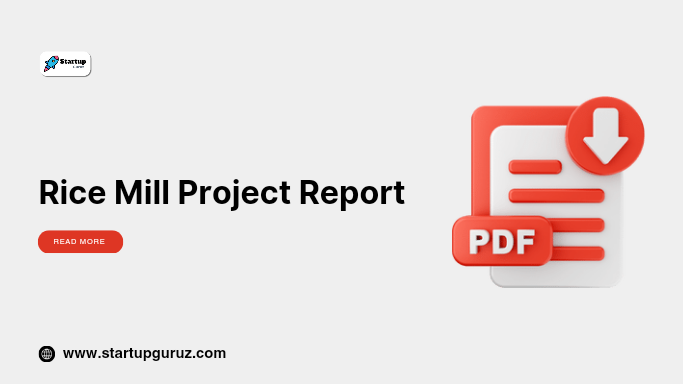Rice Mill Project Report
Rice Mill Project Report: A Comprehensive Guide
Rice milling is one of the most profitable businesses in the agricultural sector. With rice being a staple food for over half of the global population, the demand for processed rice remains consistently high. Starting a rice mill is an excellent business idea, especially in regions where rice is grown abundantly. This report aims to provide detailed insights into setting up a rice mill, covering market analysis, production processes, financial planning, and frequently asked questions.

Importance of a Rice Mill Project Report
A rice mill project report is a critical document for entrepreneurs planning to start or expand a rice milling business. It outlines the financial feasibility, operational strategy, market demand, and project costs, making it easier to secure funding and manage the business effectively.
Key Benefits:
- Financial Planning: Helps in budgeting and forecasting revenue.
- Loan Approval: Essential for bank loans and investor pitches.
- Operational Clarity: Provides a step-by-step plan for setting up the mill.
- Risk Mitigation: Identifies potential risks and solutions.
Components of a Rice Mill Project Report
1. Executive Summary
- Overview of the project.
- Objectives and mission statement.
- Funding requirements and expected profitability.
2. Market Analysis
- Global Demand: Rice consumption trends in different regions.
- Market Opportunities: Export potential, value-added products like brown rice, and organic rice.
- Competitors: Analysis of small and large-scale rice mills.
3. Business Model
- Primary Products: Processed white rice, brown rice, and broken rice.
- By-products: Rice bran, husk, and paddy straw for animal feed or energy production.
- Target Market: Wholesalers, retailers, and export markets.
4. Rice Milling Process
The rice milling process involves several steps:
- Cleaning: Removal of impurities like stones and straw.
- Dehusking: Separating husk from the paddy.
- Polishing: Enhancing the texture and appearance of rice grains.
- Grading: Sorting rice based on size and quality.
- Packaging: Packing processed rice into bags or containers for distribution.
Setting Up a Rice Mill
Infrastructure Requirements
- Land: A minimum of 1,000 square feet for a small-scale mill.
- Building: Factory space for machinery, storage, and office.
- Utilities: Water supply, electricity, and waste management.
Machinery and Equipment
| Machinery | Estimated Cost (₹) |
|---|---|
| Paddy cleaner | 1,50,000 – 3,00,000 |
| Dehusker | 2,50,000 – 4,00,000 |
| Rice polisher | 3,00,000 – 5,00,000 |
| Grader and sorter | 2,00,000 – 3,50,000 |
| Packaging machine | 1,00,000 – 2,50,000 |
| Total Machinery Cost | 10,00,000 – 18,00,000 |
Licenses and Permits
- FSSAI Certification.
- GST Registration.
- Trade License.
- Environmental Clearance.
Financial Projections
Initial Investment
| Expense Item | Estimated Cost (₹) |
|---|---|
| Land and building | 10,00,000 – 15,00,000 |
| Machinery and equipment | 10,00,000 – 18,00,000 |
| Initial raw material (paddy) | 5,00,000 – 8,00,000 |
| Labor and setup | 3,00,000 – 5,00,000 |
| Miscellaneous expenses | 2,00,000 – 3,00,000 |
| Total Investment | 30,00,000 – 49,00,000 |
Profitability Analysis
- Monthly Production: 50 tons of rice.
- Revenue per Month: ₹10,00,000 – ₹15,00,000.
- Net Profit Margin: 20-25%.
- Break-even Period: 12-18 months.
Marketing and Sales Strategy
Distribution Channels
- Local Markets: Supply to wholesalers and retailers.
- Export Markets: Target regions with high rice import demand.
- Online Sales: Partner with e-commerce platforms.
Advertising and Branding
- Highlight quality and purity.
- Promote eco-friendly practices if using sustainable methods.
- Offer bulk purchase discounts to attract wholesalers.
Risk Factors and Mitigation
Common Risks:
- Raw Material Shortages: Seasonal fluctuations in paddy availability.
- Machinery Breakdown: Operational delays due to equipment failure.
- Market Competition: Price wars with other rice mills.
Mitigation Strategies:
- Diversify suppliers for consistent raw material supply.
- Conduct regular maintenance of machinery.
- Focus on unique selling propositions like organic or fortified rice.
FAQs
1. What is a rice mill project report?
A document detailing the business plan, market analysis, financial projections, and operational strategies for setting up a rice mill.
2. How much does it cost to set up a rice mill?
The setup cost ranges between ₹30,00,000 and ₹49,00,000, depending on the scale and location.
3. What are the main products of a rice mill?
Processed rice, broken rice, rice bran, and husk.
4. What licenses are required for a rice mill?
You need FSSAI certification, GST registration, trade license, and environmental clearance.
5. Is rice milling a profitable business?
Yes, with a net profit margin of 20-25%, it is a highly profitable business.
6. What is the break-even period for a rice mill?
Typically, the break-even period is 12-18 months.
7. How do I market my rice mill products?
Through local markets, export opportunities, and online sales platforms.
8. What are the common risks in rice milling?
Raw material shortages, machinery breakdowns, and market competition are the primary risks.
9. Can I produce organic rice in a standard rice mill?
Yes, with appropriate raw materials and certifications, you can produce organic rice.
10. What is the demand for rice milling?
The demand remains high due to rice being a staple food globally, ensuring consistent market potential.
Conclusion
A rice mill is a promising business opportunity for entrepreneurs, given the steady demand for rice and its by-products. This project report highlights the essential steps, financial requirements, and operational strategies to start and run a successful rice milling business. By focusing on quality, efficiency, and marketing, you can establish a profitable venture in the agricultural sector.